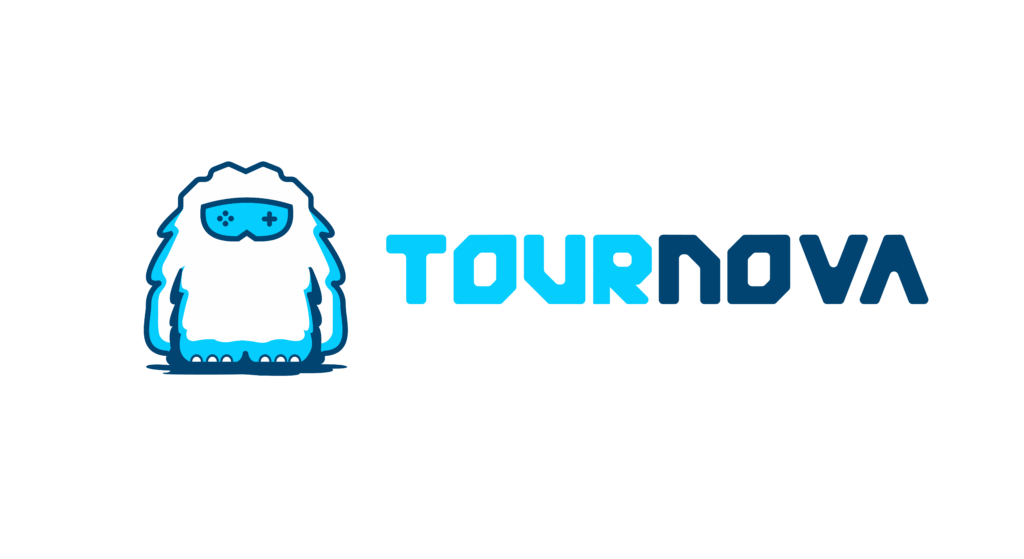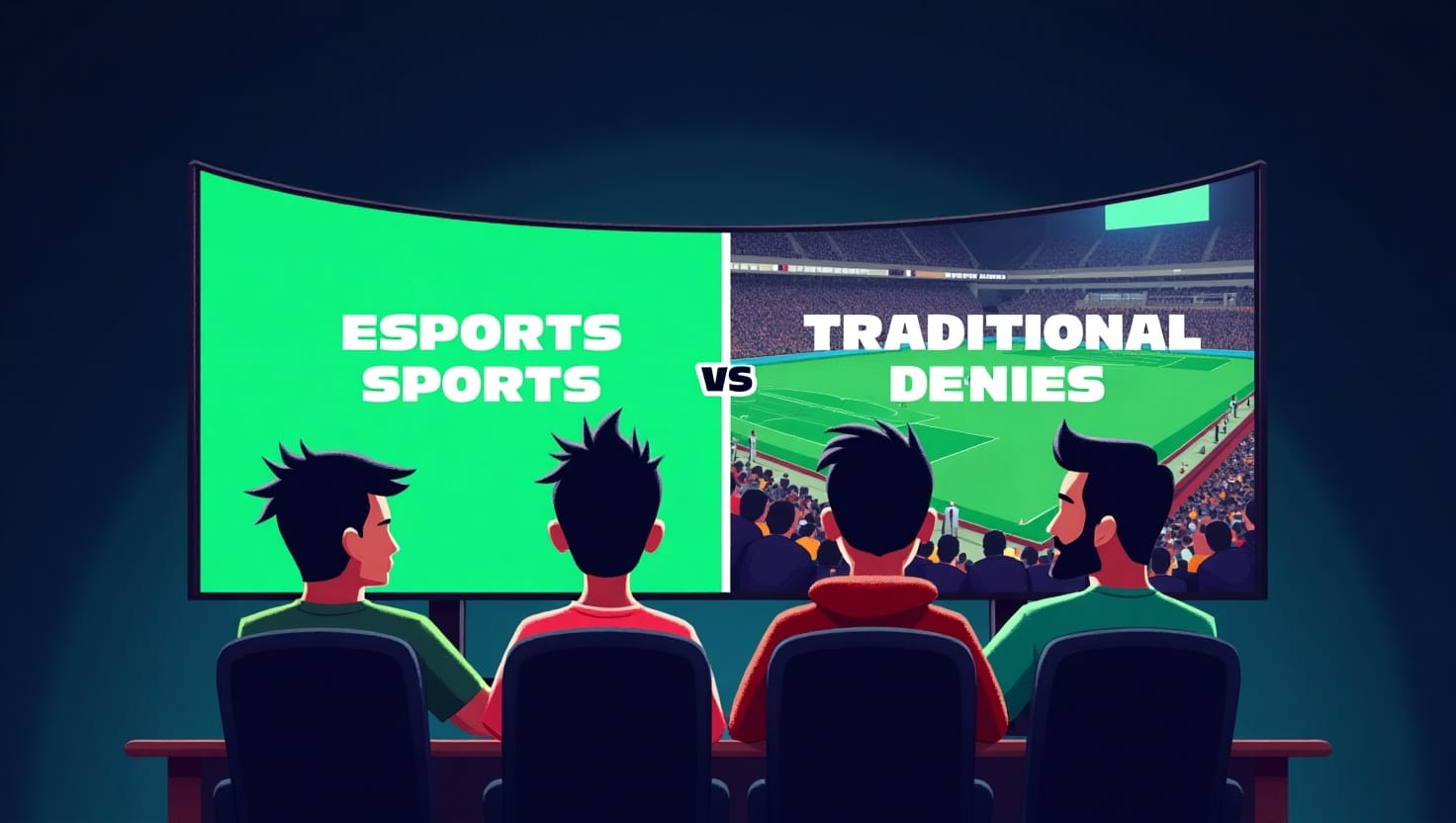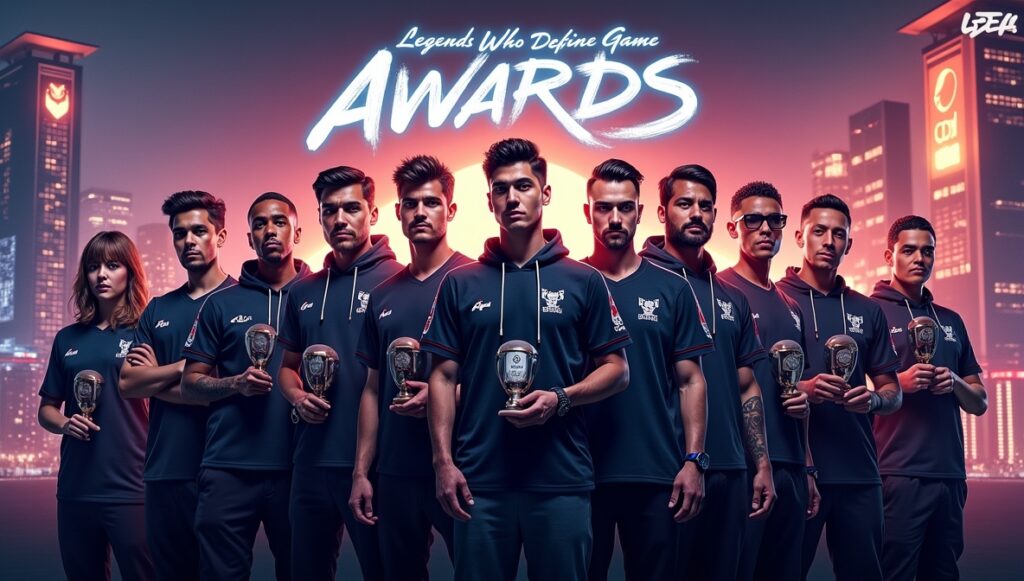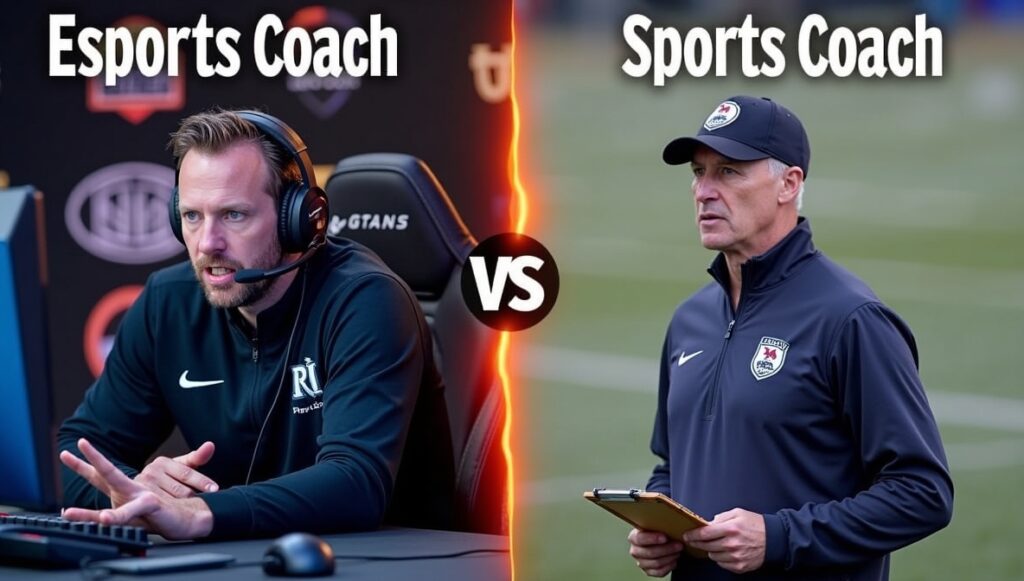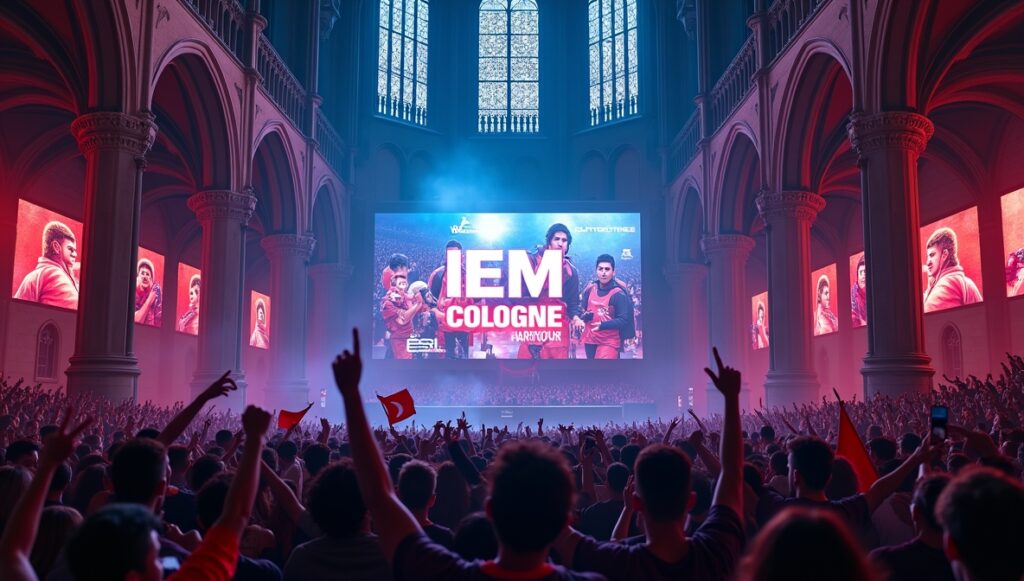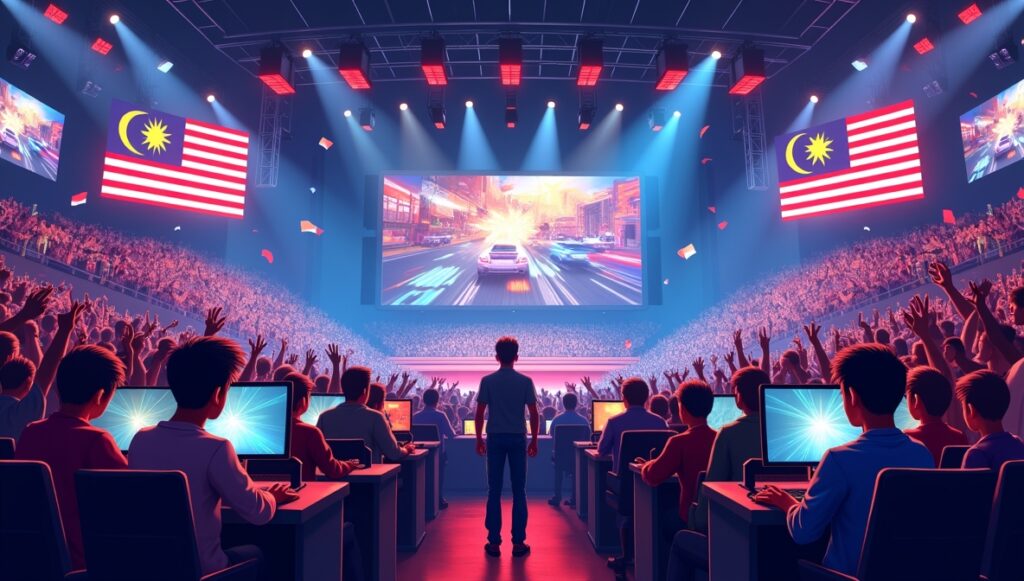I’ve spent Saturday afternoons both in roaring stadiums watching football with my dad and glued to my phone, jaw dropped, as Faker pulls off another impossible play at Worlds. These worlds used to feel completely separate; one with muddy boots and another with mechanical keyboards. But today, the line between them is as thin as a fiber-optic cable. Esports compete with traditional sports not just for viewership, but for cultural relevance, sponsorships, and fan devotion. Let’s look at how esports stacks up, scene by scene, with the old-school titans of sports.
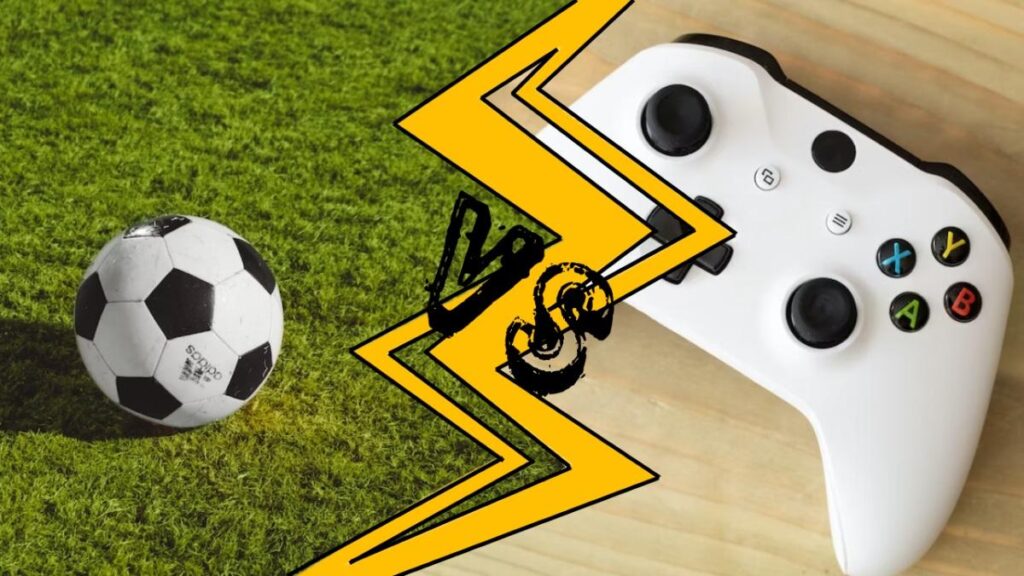
- It blends technology, entertainment, and skill to create a fast-growing digital sport.
Esports Compete With Traditional Sports
No longer just a “niche” hobby, esports now flashes on Times Square billboards, fills arenas from Seoul to Seattle, and boasts player trades that would make any football manager’s head spin. But is all this buzz enough to put esports in the same league as legacy sports? Where do games stand, and what does “compete” actually mean in this context? Is it about numbers, money, fame, or culture? Let’s chase some answers.
1. Introduction: Game On; Two Worlds Collide
Nothing quite matches the electricity of walking into a sold-out soccer stadium with 80,000 fans singing in unison. But the same goosebumps hit me when I joined a live Twitch stream of the League of Legends World Finals and saw millions tuning in together from around the globe. Suddenly, watercooler conversations weren’t just about last night’s NBA game, but about Astralis’s frag count or who pulled off the sickest Overwatch clutch.
People are comparing esports to traditional sports because the numbers, stakes, and experiences are finally colliding. Esports compete with traditional sports not just in viewership, but in influence; capturing hearts, dollars, and headlines around the globe. When we ask if esports can “compete,” we’re really asking: do they belong on the same playing field, and if so, who’s winning at what??

- Prize pools in top esports tournaments now exceed those in some Olympic sports.
2. Popularity and Reach: Viewers, Fans, and Engagement
Let’s put it in perspective. The Super Bowl is a cultural event, but the 2024 League of Legends Worlds drew over 6.4 million peak viewers globally; more than most NBA Finals games! The International (Dota 2) regularly pulls in multi-million live streams. Physical stadiums are still king in scale (105,000 at the Camp Nou!), but esports events pack Lanxess Arena or the Shanghai Mercedes-Benz Arena with thousands of screaming fans.
It isn’t just about filling seats. Esports dominates platforms like Twitch, TikTok, and YouTube. Younger audiences; especially Gen Z; are shifting routines away from TV to Discord chats and virtual watch parties. Ask any 15-year-old if they’d rather watch Real Madrid or T1, and the answer is less predictable than you might think. As TV habits change, esports is growing by double digits annually, ready to catch and in certain circles, already matching classic sports.
3. Prize Money, Salaries, and Sponsorships: The Business of Competition
A decade ago, the idea of a kid becoming a millionaire playing video games was the stuff of fantasy. Fast forward: esports compete with traditional sports in prize money and prestige. The International’s prize pool peaked at over $40 million, dwarfing even the Masters in golf. League of Legends World Champions pocket sizable six-figure winnings, while Fortnite’s Bugha walked away with $3 million at age 16.
Average salaries still lean toward legacy sports; Premier League footballers or NBA stars medal in that category, but top esports pros consistently earn six- and even seven-figure paychecks thanks to endorsement deals with Red Bull, Nike, and Audi. Sponsorship isn’t a handout: companies see real value in teams like FaZe Clan, Gen.G, and G2 Esports. And the business of streaming has created a parallel revenue highway; just look at Ninja’s multi-million dollar deals.
That said, traditional sports have decades of TV revenue and merchandise sales propping them up. Esports is catching up fast, but not every esports pro lands a superstar contract. For many, it’s still part hustle, part passion.
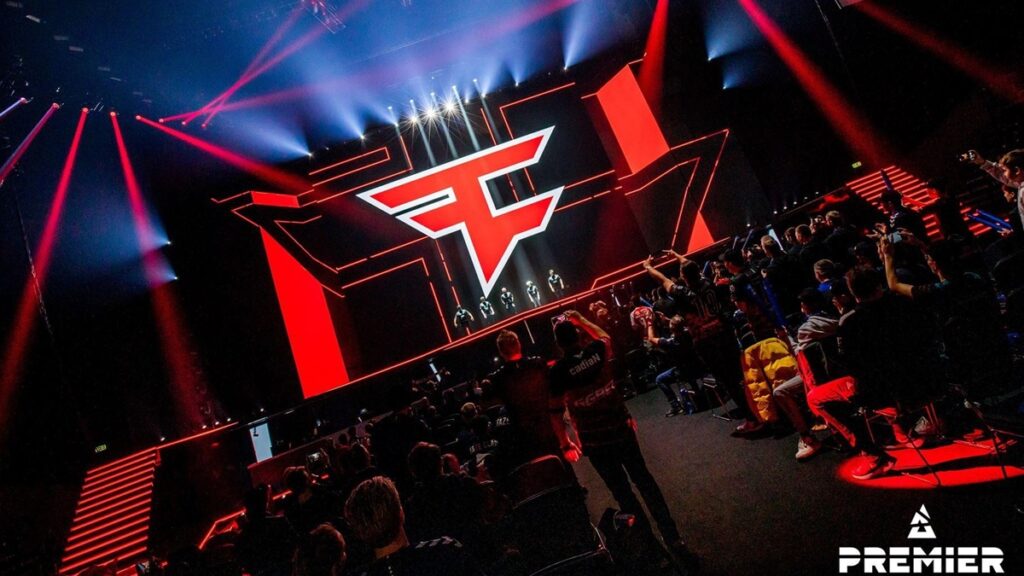
Traditional sports are embracing esports through crossover events and sponsorships.
4. Training, Performance, and Skill: What It Takes to Compete
I once tried a pro gaming bootcamp for a day; my hands ached after two hours, and my brain felt like jelly. The regimen would shock most people: top teams train 6-10 hours a day, mix in strategic review, reaction drills, and even see sports psychologists for mental toughness. Forget the “lazy gamer” stereotype; these are real athletes in all but the traditional sense.
Compared to legacy sports, the set-up is eerily similar; bootcamps, diet plans, pre-tournament rituals, travel grinds, and yes, the pressure to stay on top. Esports compete with traditional sports not just in visibility but in structure and demands. Soccer stars work on fitness and ball skills; Counter-Strike pros grind movement, tactics, and muscle memory. Both face burnout, repetitive stress injuries, and the loneliness of the spotlight.
What’s wild is how much overlap there is: nutritionists, physiotherapists, tactical analysis, and team chemistry are non-negotiable, regardless of whether you’re wielding a bat or a mouse. Strategy and teamwork aren’t just buzzwords; they’re make-or-break.
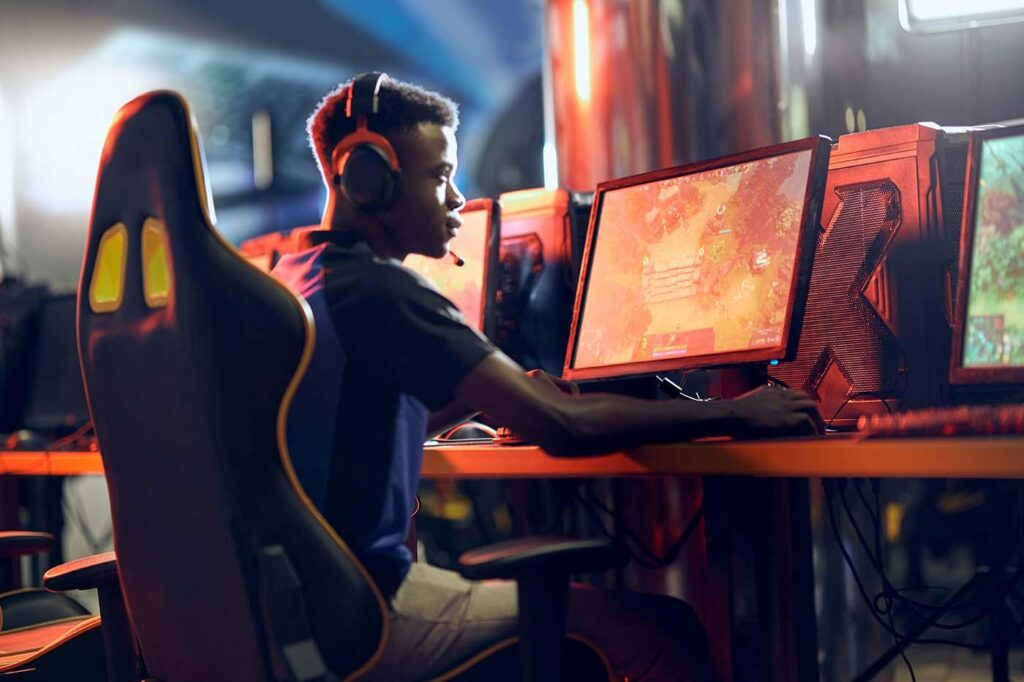
- While traditional sports rely on physical prowess, esports showcases mental agility.
5. Fandom, Media, and Cultural Impact
Some of my loudest cheers have come not in football stadiums, but online; spamming emotes in Twitch chat as a Valorant ace closes out a tense match. Esports fans travel for tournaments, wrap scarves around their necks, and rock limited-edition jerseys. Social media memes, highlight montages, livestream shoutouts; it’s a different kind of celebration, but just as vibrant.
The scale is hard to ignore. Worlds and TI fill arenas and dominate trending tabs, but mainstream sports still rule the airwaves in many countries, especially for older fans. Esports pioneered streaming, created pop-culture crossovers (remember Travis Scott’s Fortnite concert?), and set the template for digital fan engagement. Global? You bet. A championship in Seoul can inspire a new team in Brazil, no passport needed.
6. Recognition, Legitimacy, and Barriers
We’re seeing real change: esports is now recognized by governments in South Korea, Germany, and the U.S., with athletes receiving official sports visas and some even standing on Olympic stages (as demos, for now). Esports compete with traditional sports in legitimacy, with dozens of universities offering scholarships and student leagues growing massive, mirroring the infrastructure and recognition once reserved only for legacy athletics.
Still, not every country or committee is on board. Stereotypes linger; old guard questioning health or the legitimacy of “playing on a screen.” Esports faces unique barriers: heavy publisher control, title churn, access to expensive gear, and worries around long-term stability. Unlike football or tennis, the playing field can shift radically from one game to another.

- Universities and the military are offering esports scholarships and training programs.
7. What the Future Holds: Will Esports Level the Playing Field?
So, where is this going? If you ask a Gen Alpha kid, the gap is closing fast. With tech like VR and AR, global orgs, and huge brands pouring in, we may well see a future where “athlete” includes anyone who can strategize, react, and inspire; on the field or online.
Already, traditional clubs like PSG and Schalke own esports teams, and athletes from David Beckham to Shaquille O’Neal invest in gaming orgs. Events may one day merge, with Olympic golds for both sprinters and Street Fighter champions. The line between sports and esports will only keep blurring; perhaps the real win is an expanded definition of what competition and athleticism can mean.
The New Playing Field: How Tournova Levels the Competition for All
As esports rises to stand shoulder-to-shoulder with traditional sports in fandom, training, and global reach, Tournova makes that battlefield instantly accessible; no stadium required. Esports compete with traditional sports not just in prestige but in infrastructure, and Tournova mirrors that professionalism at every level. Through seamless integration with Discord and Telegram, Tournova empowers players and organizers to create, join, and manage tournaments with the same energy and efficiency seen on the world’s biggest stages. Whether you’re after a friendly knockout with friends or a cash prize bracket against top talent, the platform automates player registration, matchups, and prize distribution—so you can focus on strategy and gameplay.

- Critics argue esports lacks the physical discipline of traditional sports, but fans disagree.
But Tournova’s ecosystem goes deeper than mechanics; it rewards both persistence and performance. Every match, every hustle, and every challenge earns you platform tokens. These tokens are your passport to bigger competitions, digital rewards, and special auctions, mirroring the “prize money and sponsorship” buzz now fueling the pro scene. So if you’re inspired by esports’ surge and wondering where you fit, Tournova is the on-ramp: lowering barriers, sparking competition, and letting anyone, from rookies to organizers, play their part in the next frontier of sport.
8. Closing Up: More Than a Game
Esports isn’t replacing football or basketball overnight. But where it does compete, fandom, energy, prodigy-level training, cultural impact; it’s not just keeping up, it’s leading. Traditional sports still own the nostalgia and some serious cash flow, but esports is winning younger hearts, testing new media, and reshaping the stage. Maybe the best question isn’t, “Can esports compete with traditional sports?” but rather, “What will competition look like next?” The field is wide open; whether your hero dunks on the court or racks up pentakills on screen, there’s never been a better time to be a fan. Thanks for joining this deep dive; let’s see which team you pick, or maybe how you’ll bridge the gap yourself. Game on!
FAQs
1. How do pro esports players maintain focus during hours-long tournaments?
They prepare using mental coaches, scheduled breaks, meditation, and hydration routines; just like chess grandmasters or marathon runners.
2. Is there age discrimination in pro esports, or can older players still shine?
While many top pros are young, some game titles reward experience and strategy over reflexes, allowing veterans to stay competitive (especially in games like Dota 2 or tactical shooters).
3. Are pathways into esports as accessible as those for traditional sports?
It’s often easier to start: anyone with an internet connection and a device can compete online, though reaching pro level still takes resources, connections, and luck.
4. How do teams handle language and cultural differences in international lineups?
Pro orgs employ translators and coaches; mixed-language teams often settle on a “team language” (usually English) and develop their own lingo and bond through bootcamps and social activities.
